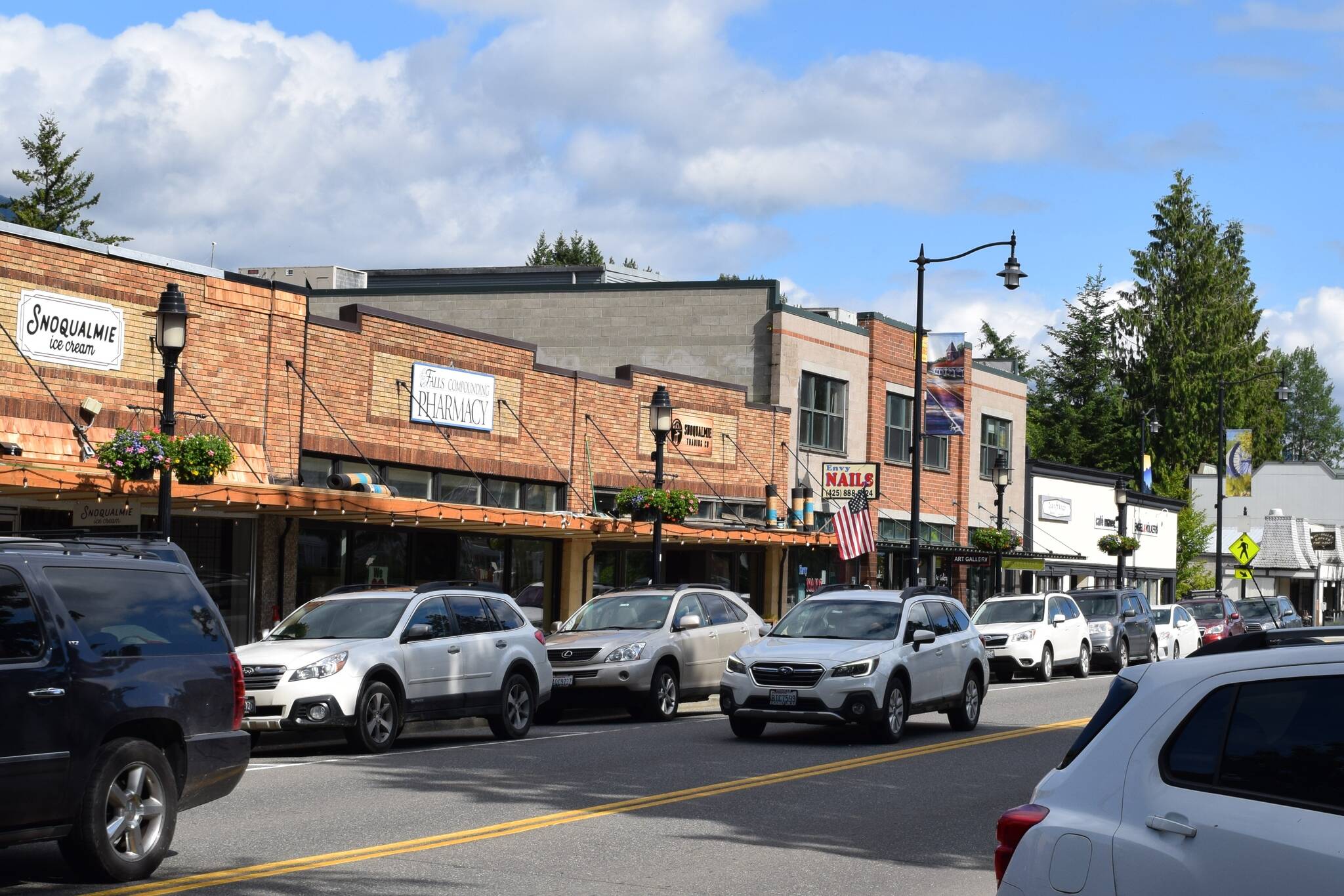Inflation and supply chain issues are contributing to budget challenges at city hall as the Snoqualmie City Council began debate this past week on how to spend remaining federal pandemic relief funds.
The question of how to allocate the remaining $850,000 the city has in one-time COVID-19 relief funds from the American Rescue Plan (ARPA) comes soon before the council starts working on the 2023-2024 biennial budget.
Mayor Katherine Ross’ proposed budget and an update on the city’s financial outlook is not expected until mid-September. But some members of the council are concerned about an arduous budget cycle.
“We have an operating budget that’s in absolute crisis. We are not going to be able to fund the next biennium and it’s going to get worse by the time we pass it because inflation is persistently staying high,” Mayor Pro Tem James Mayhew said at the Aug. 22 council meeting.
“We’ve got inflation running rampant across our budget,” he said.
Councilmember Matt Laase also expressed concerns about the city’s ability to fund its operating budget.
“We’re going to have to make some cuts and make some hard decisions, and that’s going to create some challenges across the board,” he said.
The city’s general operating budget funds basic government services including police, fire, parks, maintenance, community development and city staff salaries. If the city’s operating revenue fails to exceed its expenses, it would not run a deficit, but would have to pull from its general fund balance.
“It is important to note that the city has funds (i.e., cash on hand) within [the general operating budget] that exceed current and proposed reserve policy targets,” Danna McCall, a city spokesperson, wrote in an email. “Therefore, broadly speaking, the administration is confident that it will be able to fund the next two-year operating budget.”
During a presentation by the city’s finance director in March, the city general operating revenues were projected to remain above expenditures until 2025. That was in part due to the inclusion of ARPA funds in the city budget, which prevent a revenue shortfall that would have come over the next biennium (2023-2024).
The city’s outlook has changed since then. According to a preliminary city general operating budget from Aug. 4, city revenues without intervention are expected to fall below expenditures by $280,700 in 2023, and by $469,000 in 2024.
While the city has had budgetary challenges in recent years due to the fallout of Salish Expansion project, near complete buildout on the Snoqualmie Ridge and the pandemic, McCall said this year is different, noting inflation and supply chain issues represent a “relatively novel challenge.”
The overall challenge remains similar — city expenditures inflate faster than its revenues. City revenue is primarily limited by a state restriction on how much the city can increase property taxes each year. Property taxes fund nearly half of the general budget, but are capped at a 1% annual increase.
Remaining ARPA funds
With the need for additional revenue, the city’s remaining ARPA funds could help support the city against inflationary pressure.
The city received $3.8 million in ARPA funds from the federal government in two separate allotments over the last two years. The city received the first $1.9 million in 2021, and received the remaining $1.9 million this July.
A majority of that funding has already been placed into future budget plans – although not all has been spent.
About $2 million of those funds have been budgeted to support ongoing city revenue challenges and supporting the general operating fund. According to an August draft budget, the city will put $750,000 of ARPA funding into the operating budget in 2022 and 2023, and another $500,000 in 2024.
Another $950,000 of the $3.8 million was awarded as grants to support community residents, businesses and nonprofits who also faced pandemic challenges. Those grants were expected to begin going out this week.
That leaves $850,000 for the city to decide how to spend.
City staff have proposed using the remaining funds to address inflationary pressures, while also suggesting possible IT improvements or employee retention programs to address recent hiring challenges.
Councilmembers also considered holding on to those remaining dollars to protect against inflationary risk or using them to support social service organizations and economic development projects that would benefit businesses.
There is still a great need among community nonprofits, who support the bulk of the city’s social services, and local businesses who each face their own pandemic-related funding challenges.
Councilmembers Laase and Cara Christensen highlighted the importance of supporting social service nonprofits, as many families in town continue to face post-pandemic challenges.
“Our friends and neighbors are struggling,” Laase said. “And it’s not going to get better. It’s going to get worse.”
Councilmember Rob Wotton highlighted a need among the local business community, which has battled its own set of inflationary and staffing-related challenges.
“Things we thought we were going to recover from, we have not recovered from,” SnoValley Chamber of Commerce CEO Kelly Coughlin said during a recent council meeting. “The recession is here. It has hit us and we’re seeing a huge downturn in tourism.”
The council has yet to decide how those remaining funds will be spent, but indicated they are waiting for more information on the operating budget, economic development committee and human services committee.



